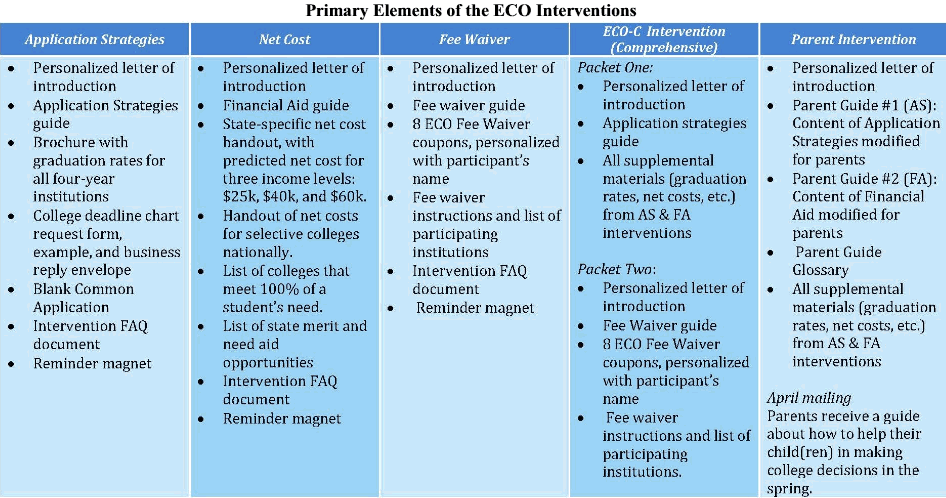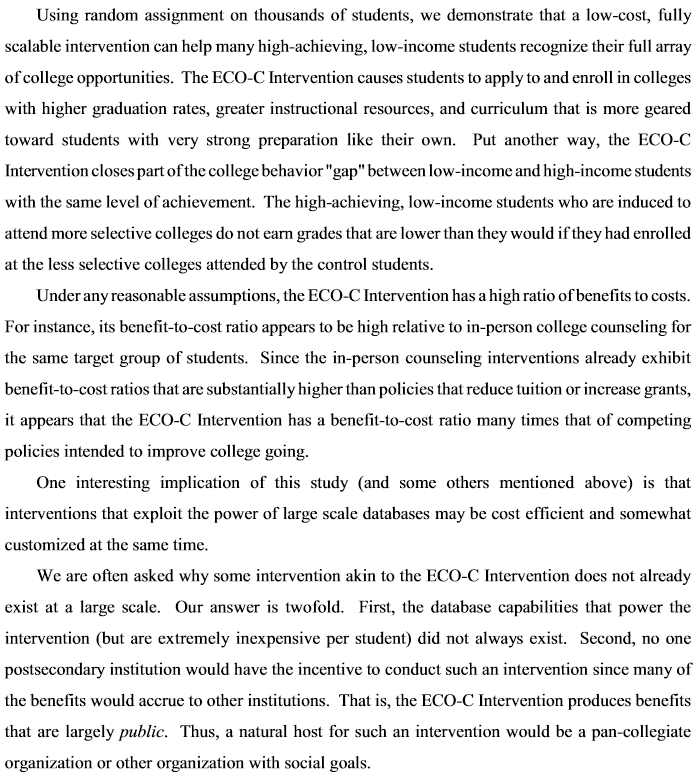|
|
|
|
|
|
|
News & Views item - March 2013 |
![]() Higher Education and Low Socio-Economic Status. (March 30, 2013)
Higher Education and Low Socio-Economic Status. (March 30, 2013)
The Washington bureau chief of The New York Times, David Leonhardt, in yesterday's NYT's edition writes about an extensive mailout (real paper) "...consisted of brightly colored accordion folders containing about 75 sheets of paper... filed with information about colleges [universities]: their admissions standards, graduation rates and financial aid policies"
The recipients "were mostly high-achieving, low-income students, and they were part of a randomized experiment... to determine whether most [economically] poor students did not attend selective colleges because they did not want to, or because they did not understand that they could".
The research by Caroline Hoxby, Stanford University, NBER
and Sarah Turner, University of Virginia, NBER is published by the
Stanford Institute for Economic Policy Research and is available on-line as
Expanding College Opportunities for High-Achieving, Low Income Students![]() .
.

The authors conclude:

Summarising the "experiment" for the New York Times Mr Leonhardt noted:
Among a control group of low-income students
with SAT scores good enough to attend top colleges — but who did not receive
the information packets — only 30 percent gained admission to a college
matching their academic qualifications.
Among a similar group of students who did
receive a packet, 54 percent gained admission...
Selective colleges frequently cost less for
low-income students than local colleges, because the selective ones have the
resources to offer bigger scholarships.
[A]t Harvard, such students paid only $1,300 a year.
Furthermore, citing the University of Wisconsin system Sarah Turner said the top research intensive campus in Madison, had year's net cost of $6,000 while that at the less-selective campuses of the system almost reached $10,000 for a year's attendance.
Certainly, there are differences in the situation faced by prospective students in Australia as compared to that in the United States. Nevertheless, it is likely that many highly capable students from low SES families who chose not to go to a Group of Eight university would do so if approached as Caroline Hoxby and Sarah Turner have done in their study, thereby improving not only themselves but also Australia's commonweal.